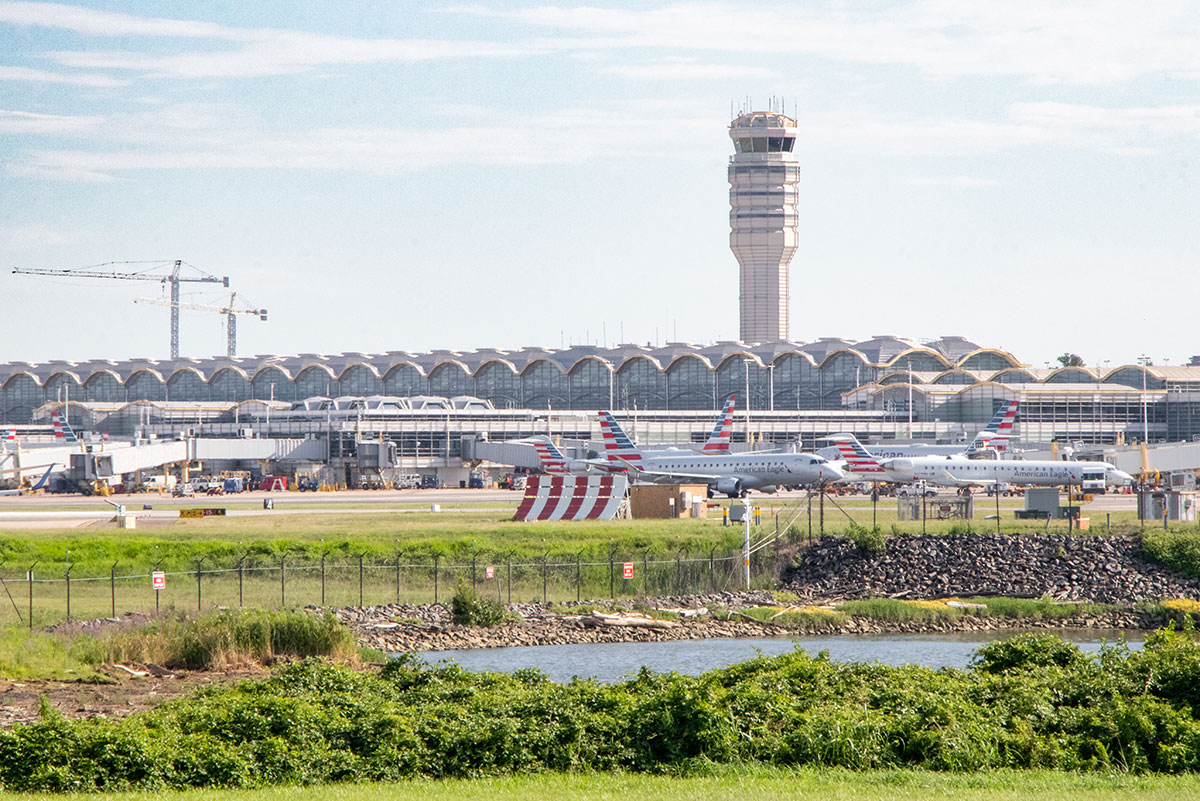
UPDATED: It was reported Tuesday, July 3, that George Washington’s Mount Vernon and Dominion Energy have agreed to work together to find a new location for Dominion’s proposed natural gas compressor station.
“It’s a great success story of preservation in the United States that everybody in Northern Virginia who drives down that parkway and looks over and sees the pristine view, they’re looking not only at the same view that George Washington had, but the same view that John Smith had in 1608 when he was the first European to explore the river; and not to mention all the Native Americans who saw this incredible river basin here,” says Doug Bradburn, president and CEO of George Washington’s Mount Vernon, about the view of the Potomac River from the first president’s home.
However, there is a new situation that Bradburn and the Mount Vernon Ladies’ Association, which has owned and operated Mount Vernon since the 1850s, believe could greatly impact that view.
In 2016, Dominion Energy unveiled plans for a natural gas compressor station about 3 miles across the river from Mount Vernon in Charles County, Maryland, known as the Eastern Market Access project. Dominion says that the stacks that would come from this station would not exceed 50 feet and would be hidden by a cliff and tall trees; a Chesapeake Conservancy report from 2017 said that stacks would need to be more than 150-200 feet to be seen. The project was approved by the Federal Energy Regulatory Commission (FERC), but the Charles County Board of Appeals denied Dominion permission to build the station. Dominion is currently suing Charles County to overturn its decision.
“Charles Station is an essential component for the Eastern Market Access project,” says Karl R. Neddenien, Maryland media/community relations manager for Dominion. “This project is needed to deliver clean, reliable natural gas for use in Northern Virginia and Southern Maryland.”
Dominion says that it has worked to find a location for the facility that would not impact the home and grounds of Mount Vernon, and any information or images showing that the station would be visible from Mount Vernon is “misinformation” and “misleading,” according to Neddenien.
Bradburn doesn’t believe that Dominion can make any promises as to the stacks not being seen because he says permits for the building have not been approved. In addition to the FERC certificate, Dominion says it has federal permits from U.S. Fish and Wildlife Service, and permits from the state of Maryland for Coastal Zone Management Consistency Certification and Natural Historic Preservation Act, Section 106 Consultation.
The stacks aren’t his main concern though, rather the potential long-term impact a station in the viewing area of Mount Vernon could have, both environmentally and in terms of future development.
“Once this goes in your’re going to get five years from now, 10 years from now, 15 years from now, more industrial development, because once those local zones have been broken, industry follows industry and the sprawl and spread from D.C. is a very powerful, powerful thing,” says Bradburn. “Dominion will claim that they don’t have any other interest in doing anything more in this spot, but Dominion might not exist in 10 years. They might be bought out by somebody else. Mount Vernon will exist in 10 years and will exist in 20 years … They can’t guarantee anything about what the future of this industrial site will be and it’s absolutely inappropriate in this historic location.”
As of publication, more than 17,000 people have signed a petition on the Mount Vernon website opposing the Dominion project. The National Trust has also weighed in, listing Mount Vernon as a “most endangered landmark,” specifically citing the Dominion project, as reported by the Washington Business Journal.
Mount Vernon says it has been in contact with Dominion about the station and has met with representatives as recently as Monday, at which time, as Bradburn says, they could only agree that they disagree on the station’s potential impact. Bradburn says that they would happily work with Dominion and local politicians to find an alternative site; according to Bradburn, there already is an alternative site proposed by Dominion in one of its applications in an already established zone 10 miles down the river. Dominion was unable to confirm this claim.
Neddenien says that the Charles County location was chosen because of its position along the pipeline and within a specific span of the pipeline, and also because it minimizes the impact on its surroundings.
“This is of great significance,” explains Bradburn. “Once [the view] is lost, it cannot be repaired. Mount Vernon cannot be moved. This compressor station can be moved.”




